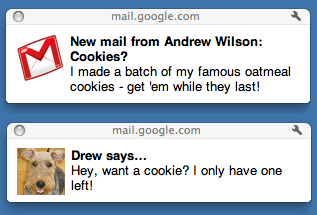Google.org continues to ramp up technology projects and test new ideas while Google’s overall charitable giving, in-kind giving and employee volunteering have grown as well. Our newsletter outlines the
latest updates to our philanthropic projects. I caught up with Megan Smith, VP New Business Development and General Manager of Google.org, to talk about how Google views philanthropy.
After two years at the helm of Google.org, what are you most optimistic about?The Internet offers an opportunity to connect in ways never before possible. Things that have historically been far apart are now “virtually adjacent”—most people are a text away, data sets can be mashed up, and all world knowledge is coming online from both expected and surprising sources. Given all of this, I am most excited about all the extraordinary ways people are using the web to connect, be informed, use data and to start solving problems together.
For Google.org specifically, we want to contribute our knowledge and skills to help use technology to address humanity’s greatest challenges. We now have more than 50 engineers and about 40 other cross-functional Googlers working on four or five larger projects—like
Google Crisis Response and
RE<C—and over a dozen smaller experimental pilot projects.
What kind of project fits this opportunity?One of our newer projects,
Google Earth Engine, takes advantage of Google’s computing infrastructure to create a planetary sciences computation platform that could help reduce negative environmental impact at scale. The first focus is on deforestation monitoring. Earth Engine has just made it through the pilot phase to a full project with its launch last month at climate change talks in Mexico. If we meet our goals to enable global-scale monitoring of changes in the planet’s environment, I believe that Earth Engine could play an important information role in helping to slow deforestation.
What’s the biggest lesson you’ve learned since joining Google.org?Two things: first, the opportunity we have is great; and second, the work has served as a reminder that creating truly useful, innovative technology is challenging and requires patient iteration, dialog, teamwork and creativity. It takes time to gather new ideas, learn from the right partners, collaborate, pilot those ideas that pass initial assessment and then launch for scale the few projects that meet the criteria for a Google.org product.
Do Google.org projects have a specific focus?We don’t have a topical focus—we work on technology solutions to many different kinds of global challenges. The key is to take advantage of Google’s strengths. In the area of global health, for example, we have been able to create a
global flu monitoring system based on search data. For our environmental work, we were able to leverage our data center computing power to put together the
finest-scale forest map of Mexico to date (processing this data would take two years on one computer, but we made it in less than 24 hours using our computing infrastructure).
How does Google.org start and ramp up its technology projects?We work to tap into the talent at Google. Some projects have come out of hallway conversations and others from extensive talks with partners in the field. Formally, we have a bimonthly new initiatives meeting with senior engineers where talented individuals or teams within Google bring ideas or prototypes. If we think the idea is a match and has promise, we give it budget, headcount, guidance and time to see where it can go during a pilot period. Once we have a live pilot or project, we take advantage of Google.com’s standard project review and management processes that our company has effectively used for years.
What if those pilots fail?That’s normal. We should expect that some of them will fail or will only have smaller impact. If you’re not failing some of the time, you’re not taking risks. As we progress, some of our failures will hopefully teach us as much as some of our successes.
What other charitable giving does Google do?As a company that has been doing well, it’s important that we push ourselves to be amongst the most generous companies. We have several charitable giving programs supporting, for example, education (especially K-12 science and math programs), university research, communities where we work, and technology solutions for underserved groups. Last year the company gave more than $145 million to non-profits and academic institutions, and more than $184 million when including
Google Grants, Google.org technology projects and in-kind product
support for non-profits.
How is this philanthropic work different from that of other companies?Like other companies, we have charitable giving programs, we provide products in-kind and we have a range of employee volunteering programs. Some companies like ours may also have experiments like Google.org to leverage their strengths—a form of skills-based giving. However, many companies do amazing charitable work through a centralized Corporate Social Responsibility arm that tackles a key issue or two. We approach philanthropy the way we do our core business, with big goals and a “launch early and iterate” approach. Ideas come from all over the company and we work to tackle a range of issues we care about, from clean energy to education to development. It may not be as clean as the process that some others have, but we think this is how we can have the most impact.
We remain determined, as our founders said when they set
the vision for Google.org, "to find original ways to extend our assets, so that we can drive scalable, sustainable efforts. ...the underlying principle: Never stop looking for ways to do the best with what you have."
Posted by Urs Hölzle, Senior Vice President, Operations











